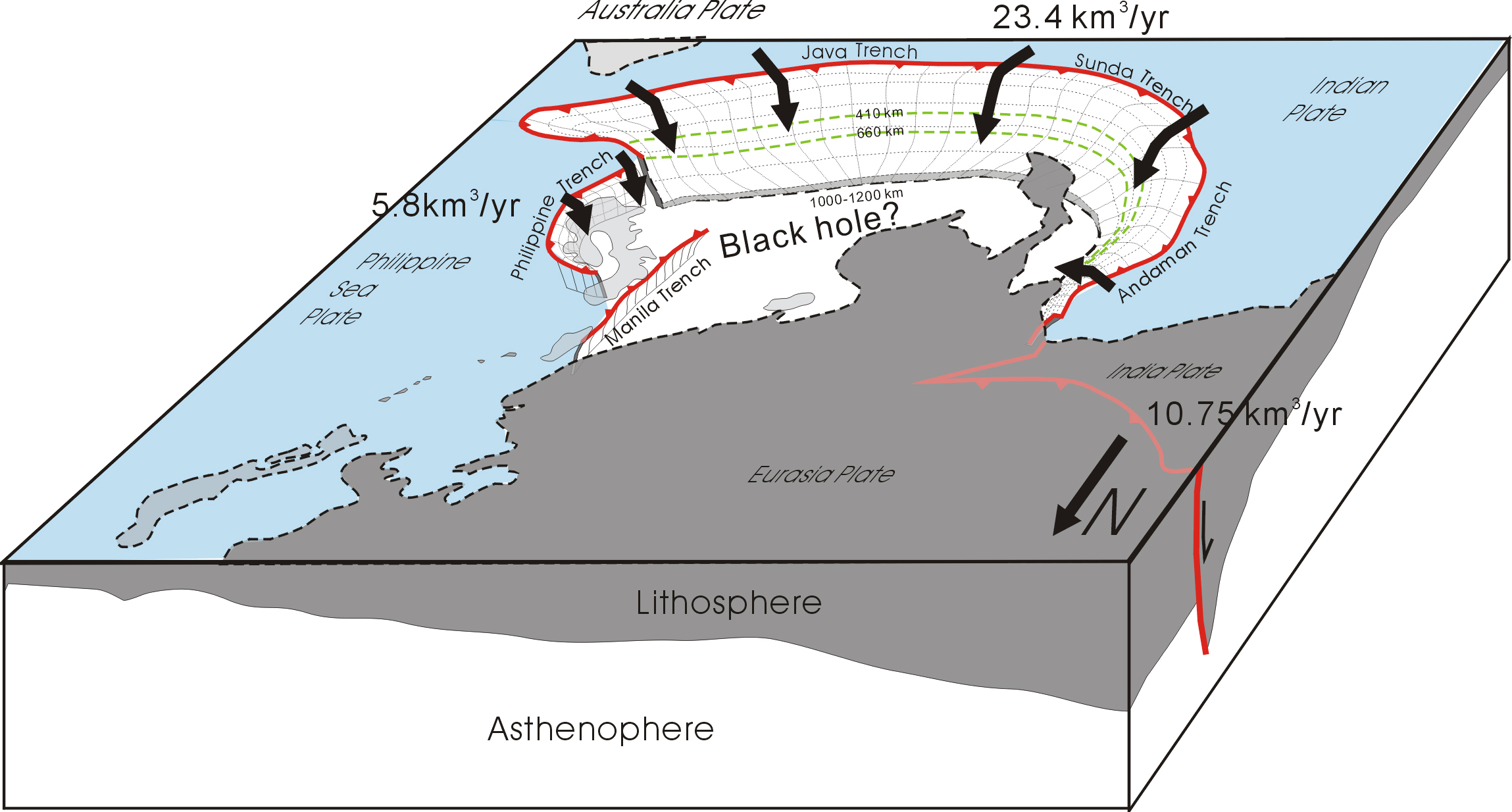News

http://doi.org/10.1016/j.earscirev.2021.103647
Among the three major types of plate boundaries in the world, subduction zones have always been an important goal for humans to explore the depths of the earth. It not only has the complex dynamic mechanisms which have a direct impact on humans, but also is the intersection of volcanic, seismic, mineral, and energy belts. The subduction zone is the main channel for the surface material to return to the deep part of the earth, and its subduction dynamics and cyclic convection mode are the cornerstones and classics of plate tectonics theory. However, when the linear subduction zone continuously bends and evolves, and finally forms a complex ring system of three-sided subduction, the original slab shape, deep structure and convection mode will be greatly changed and the dynamic mechanism will become more complex, triggering a series of new problems and phenomena that are difficult to be explained by the current plate tectonics theory.
The Southeast Asian curved subduction zone is a typical representative of this type of system. As a unique super-convergence system on the earth, it divides the Pacific Ocean and the Indian Ocean from east to west, connects Australia and the Asian continents in the north and south, and is subducted by the Philippine Sea plate, Indian plate and Australian plate in the east, west, and south directions, forming a huge curved subduction convergence system. As the Southeast Asian curved subduction zone is located in the important hub and core intersection of regional geodynamics, the deep circulation and ultimate fate of its material and energy has always been an elusive scientific mystery. There is no systematic scientific observation and accepted theoretical model, which makes this area an excellent place to promote the development of plate theory and verify scientific hypotheses, and it has been the focus of international/national science programs such as IODP, InterMargin, InterRidge and GeoPrisms.
Recently, the team of the Key Laboratory of Submarine Geosciences, MN published in Earth-Science Reviews an online review article “Dynamic processes of the curved subduction system in Southeast Asia: A review and future perspective", which provides the systematic review of the results and progress of the deep structure, material circulation, magmatic activity and geodynamic evolution process of the curved subduction system in Southeast Asia in recent decades by international and domestic academic circles.
The study has found that the Southeast Asian curved subduction system (1) is a huge "black hole" where the lithospheric material on the earth's surface circulates to the deep. According to calculations, the total volume of subduction into the Earth's interior through the peripheral subduction zone each year can reach 23.4 cubic kilometers, which is equivalent to three times the convergence of India-Tibet collisions, forming a unique global super-convergence center; (2) Subduction slab on the east and west subducts at a high angle and passes through the mantle transition zone, while the southern subduction zone traverses the mantle transition zone and lies flat in the lower mantle, forming a very unique "dustpan"-like deep mantle structure, which is different from two models of mantle structure in classical plate theory; (3) The Southeast Asian curved subduction system has a unique magma response mechanism, not only forming island arc magma close to the subduction zone, but also a large amount of intraplate magma or basalt in the back-arc basin that is indirectly related to the subduction zone away from the subduction zone; (4) The formation of the curved subduction system does not happen overnight, but experiences a long-term plate tectonic evolution process from "V" shape to curved shape.



